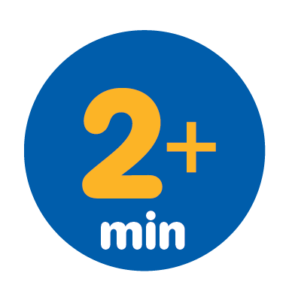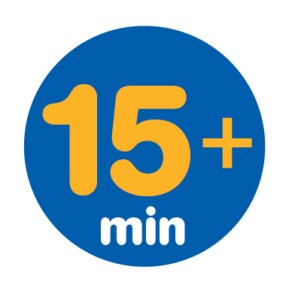![]() CLASS 7 | SILVER LININGS
CLASS 7 | SILVER LININGS
Boost moods by reframing situations to see the positive.

TRAINER OVERVIEW
- Timer or stopwatch
- Whiteboards or flip charts and markers, enough for each team
- TBH Inspiration Notes collection, so each student can choose one to take home
- Now Do It! worksheets, enough for each student



WELCOME TO CLASS
Welcome to today’s class! Our topic is “Silver Linings.”
Our TBH Blueprint focus is the “Keep Emotional Balance” action point.
We will talk about how our perception of events can shape our outlook, and what we can do to build more positivity into our experience.
We will be working on the following thinking skills today:
- Attention
- Speedy Thinking
- Nimbleness
- Verbal Skills
- Memory
- Problem Solving
- Executive Control
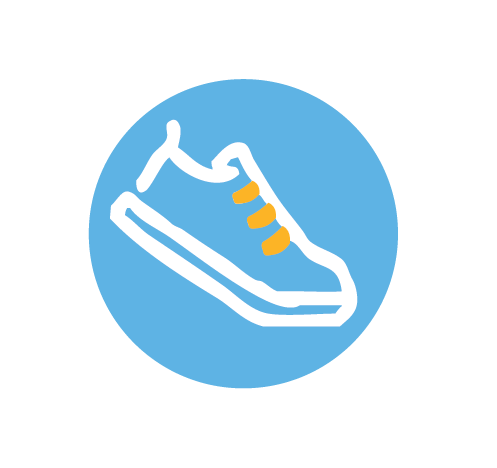
TBH LET'S GET IT STARTED
- Get everyone ready to learn with this seated toes-to-top
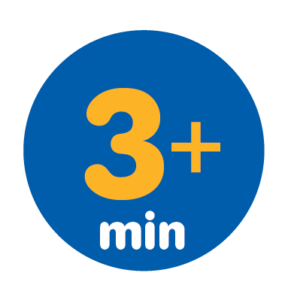 warmup.
warmup. - Use the TBH music to set your pace, or choose your own.
We are going to begin with TBH Let’s Get It Started!
Being physically active is great for our brains. This quick warmup is a great way to get focused, build energy and get us ready to learn. We’ll do this right at our seats at the beginning of every class. Just watch what I do and follow along!
(At end of warmup) Great job, everyone! We are started up and ready to go!
FEET GET STARTED!
- Lift right foot slightly off the floor. Point toes up and down, repeat a few times. Circle foot at the ankle. Circle twice to the left then to the right.
- Lift left foot slightly off the floor. Point toes up and down, repeat a few times. Circle foot at the ankle. Circle twice to the left then to the right.
LEGS GET STARTED!
- Put both feet on the floor, about hips-distance apart.
- Extend right leg in front, resting heel on the floor if able.
- Gently firm up leg muscles from thigh to calf. Focus on feeling. Pause for a few seconds. Then relax leg, releasing tension. Give leg a little stretch and shake.
- Repeat with left leg. Extend left leg in front, resting heel on the floor if able. Gently firm up leg muscles from thigh to calf. Focus on feeling. Pause for a few seconds. Then relax leg, releasing tension. Give leg a little stretch and shake.
BACKS GET STARTED!
- While seated, gently twist upper body to the right. Hold for two deep breaths. Release.
- Repeat to the left, gently twisting the upper body. Hold for two deep breaths. Release.
- Reach arms forward, gently rounding the upper back. Hold for a few seconds. Release.
- Reach arms up, straightening upper back, sitting up tall. Hold for a few seconds. Release.
ARMS GET STARTED!
- Make fists with both hands. Hold for a few seconds. Release. Give hands a little shake.
- Circle wrists a few times clockwise and counterclockwise.
- Extend right arm in front, resting arm on right thigh. Gently firm up arm muscles from shoulder to wrist. Focus on feeling. Pause for a few seconds. Then relax arm, releasing tension. Give arm a little stretch and shake.
- Repeat with left arm. Extend left arm in front, resting arm on left thigh. Gently firm up arm muscles from shoulder to wrist. Focus on feeling. Pause for a few seconds. Then relax arm, releasing tension. Give arm a little stretch and shake.
- Rest hands on thighs. Gently tense shoulders as you raise them up, and relax and release down, repeat a few times.
VOICES GET STARTED!
- Gently open and close jaw, repeating a few times.
- Gently stick tongue out and say “AHHHHH.” Then wiggle tongue back and forth a few times.
- Squeeze eyes firmly shut, hold for a few seconds. Then release and relax. Open eyes widely.
- Say “OHHHHHHHHHH.” Have group say sound with you. Hold for a few seconds.
- Say “EHHHHHHHHHH.” Have group say sound with you. Hold for a few seconds.
- Say “AHHHHHHHHHH.” Have group say sound with you. Hold for a few seconds.
- Say “OH – EH – AH.” Hold each sound for a few seconds. Repeat 3 times.
- Have class repeat 3 times with you the phrase “live every moment, laugh every day, love beyond words.”
BREATH GETS STARTED!
- Take a deep breath in through the nose and exhale out through the mouth.
- Spread arms apart and bring hands together in front, making a big circle as if hugging a large globe.
- Give selves big hug, wrapping arms across waist and squeezing gently, as able.
Click to open the TBH Let’s Get It Started! playlist.

TBH BRAIN PLAY | In the Mood
We will begin each class with a quick warm up called “Brain Plays.” These exercises are designed to flex our thinking and get us ready for the work we will do together.
Today’s “Brain Play” is called “In the Mood.” We have many different feelings, and just as many ways of describing our emotional state. Happy, sad, elated, amused … to name just a few.
We’re going to take turns listing the many ways we label our feelings. I’ll start, and then (name of student) will go next. We’ll continue around, with everyone adding to our list. We will take as many turns as time allows, and (clap/snap) together to set a nice pace. Ready?
- Ask students to take turns, one at a time, naming a feeling or mood. Continue taking turns as long as time allows.
- Have everyone clap or snap fingers to set a good pace.
- When repeating this class, ask students to come up with a mood or feeling that begins with the last letter of the previous mood named.
- Encourage distance learners to join in from home.

LEARN THE SCIENCE
- Present the science behind the class.
- Allow for brief discussion of the science with your students.

Who here believes in the power of positive thinking? Indeed, research shows that seeing things in a more positive light is a powerful tool we can use to improve our emotional health and build personal resilience and well-being. The field of positive psychology focuses on ways we can cultivate feelings that help us thrive, like happiness, satisfaction and contentment.
One of the lessons of positive psychology is that our attitude matters. If I see a situation in a negative light, I am more likely to feel angry, sad or removed. However, if I intentionally take a more positive perspective to the same situation, I’m more likely to feel happier and be satisfied with the outcome. Let’s say, for example, the weather is nasty, and a friend cancels your plan to have dinner together. What negative feelings might that bring up? Pause for discussion. That’s all possible. But think instead of some of the positive that could come out of that same situation. You could be glad to have the extra time for a fun project, or to finish a book. You could find other ways of catching up with your friend, perhaps having dinner together over video. You could be glad not to have to go out in the bad weather yourself.
One of the other interesting lessons here is that our thoughts can determine our everyday moods. Many of us assume it is the other way around! But experts teach us that consciously deciding how we will feel can dictate how we do feel. And that is really key, since feeling happier can be a key to feeling motivated to do things that are good for us like exercise and stay intellectually engaged, to socialize, and many other things.
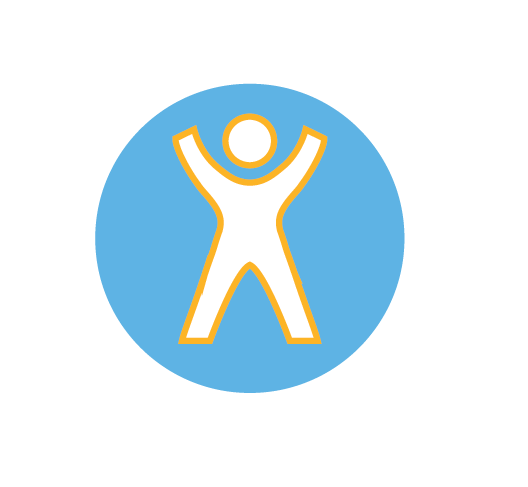
NOW DO IT!
Today we are going to practice reframing how we see a situation to build our positivity “muscles.”
In a moment, we’ll break into teams. Each team with have a (white board/flipchart) and markers. I’ll start by reading a short description of a potentially disappointing or upsetting situation. Then your team will have 1 minute to talk and write down a “silver lining” or positive reframe for the scenario. When time is up, each team will share their “silver lining” response. Then we’ll do another round with a different scenario. We’ll do as many as we have time for.
Keep in mind that our purpose here is to shift our attitude to the situation, and not suggest a change to the situation itself.
Ready? Let’s go ahead and break into two teams.
- Option to distribute Now Do It! class worksheets.
- Break your class into 2 teams. Assign each team a white board or flipchart and markers.
- Share a “Silver Linings” prompt from the list below. Allow teams 1 minute to discuss and write down their “silver lining” reframing for the prompt.
- Have teams present their “silver lining” reframes for the prompt. Hold a brief discussion about their process and responses.
- Continue with additional rounds using other “Silver Linings” prompts as time allows.
- When repeating this class, use different “Silver Linings” prompts.
- For virtual delivery, modify to do All Together. Adjust scripting accordingly.
“SILVER LININGS” PROMPTS
The restaurant runs out of the dish you ordered.
A favorite sweater shrinks in the laundry.
You drop and break a treasured serving bowl that had belonged to your grandmother.
Your daughter loses a pair of earrings you loaned her.
A pipe bursts in the apartment upstairs, causing water damage in your kitchen.
An illness outbreak forces everyone to isolate for several months.
Your favorite fitness instructor leaves for a new position.
Your family cancels a long-planned birthday celebration for you due to bad weather.
Your car breaks down on a road trip, and you have to stay overnight while it is repaired.
You’re forced to move when the company where you work for relocates.
The doctor tells you that you need to make some significant changes in your diet.
You are having trouble getting onto a video call, and can’t recall the directions.

TBH TAKEAWAY
- Share this brief wrap-up to end the workout.
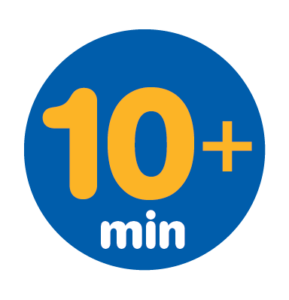
- Ask students to talk about one thing they will “take away” from today’s class.
How we see the world matters. Experts have found that we can consciously encourage ourselves to see things more positively, and in doing so can in fact improve our sense of happiness and contentment. One way to start practicing more positivity is to seek the “silver linings” in everyday disappointments, as we did today.
Can you name one way you will bring this “silver linings” practice into your daily routine?

TBH TAKE A BREATH
- Lead this cooldown
 exercise to end class.
exercise to end class. - Use the TBH music to set your pace, or choose your own.
Let’s wrap up with “TBH Take a Breath.” Being mindful of our breath and sharing some positive thoughts is a wonderful way to acknowledge what we’ve learned together before we go back to our day. Research also shows that these kinds of exercises help us focus better and even learn more effectively.
- Have students get comfortable, resting both feet flat on the floor, hands resting in their laps.
- Have students close their eyes and keep them gently closed.
- Ask students to focus their attention on their breathing, noticing the rate and rhythm of their breath. Allow them to focus on their natural breathing for a few moments.
- Instruct students to begin rhythmic breathing. Ask them to inhale slowly and deeply through their nostrils, breathing gently into their chest and belly. Then ask them to exhale slowly through their lips, slowing the rate and rhythm of their breath.
- Have students continue rhythmic breathing, instructing them to continue to focus on gently and slowly inhaling and exhaling, allowing their attention to simply “ride” the wave of their breath. Allow them to focus on rhythmic breathing for several moments.
- Offer the following positive affirmation statements below in a calm, slow voice. Invite students to simply listen, repeat the phrase silently to themselves, or to think about what each statement means to them.
My body is relaxed.
I am grateful for the chance to reframe my thinking.
I am grateful for the gifts of happiness and health.
I am grateful for myself.
I take this time and this breath for me.
- Pause for several moments.
- End the exercise by inviting students to bring their awareness back to the room, gently opening their eyes and becoming more aware of their surroundings.
- Invite them to end practice with gratitude for taking a moment for themselves, for the chance to learn together and connect with each other.
Click for the TBH Take a Breath music playlist.

COMING UP NEXT
- Thank students for attending the class.
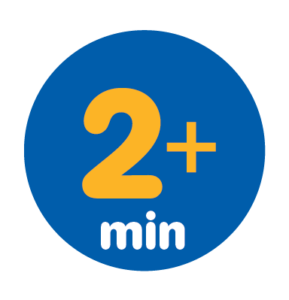
- Ask students to select a TBH Inspiration Note to take home.
- Invite students to join you for the next TBH class.
I am so glad we had this time to be together today. We learned something very meaningful today we can all really use on our own.
Before you go, please take a TBH Inspiration Note from this (bag/box/bowl). Each one has a special quote to inspire you over the days ahead.
I look forward to seeing you for our next Total Brain Health class. Be sure to bring a friend!

CLASS RESOURCES
TBH Inspiration Notes. Print out the notes at the beginning of the course. Print the notes 2-sided and in color. Cut them apart. If possible, laminate the cards for easier handling and durability. Keep the notes in a bowl or bag and allow students to randomly pick one note without looking to take home at the end of each class. I
NOW DO IT! WORKSHEETS
Use these optional worksheets to run your class.
Silver Linings Worksheet. Use this worksheet to support the class exercise as needed.
ADDITIONAL RESOURCES
Three Steps for Building Happiness. Tchiki Davis. Psychology Today (January 2018). This article offers a short, practical guide to encouraging positive thinking.








